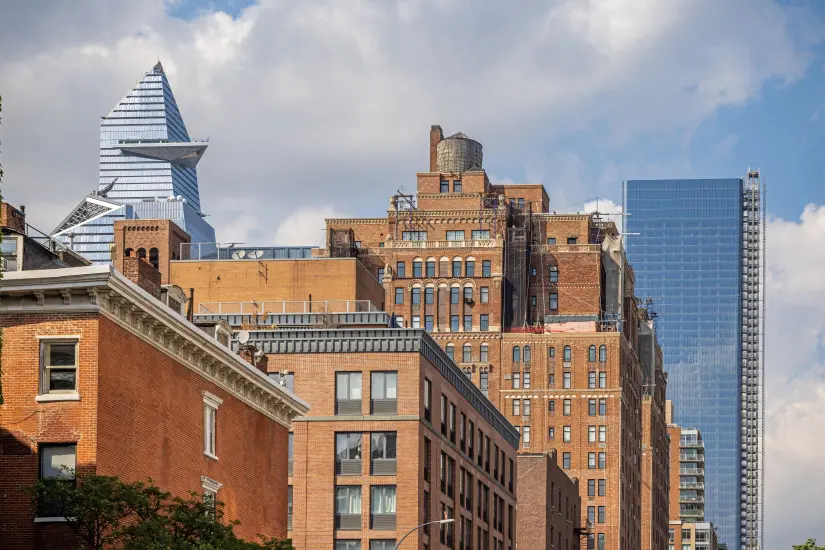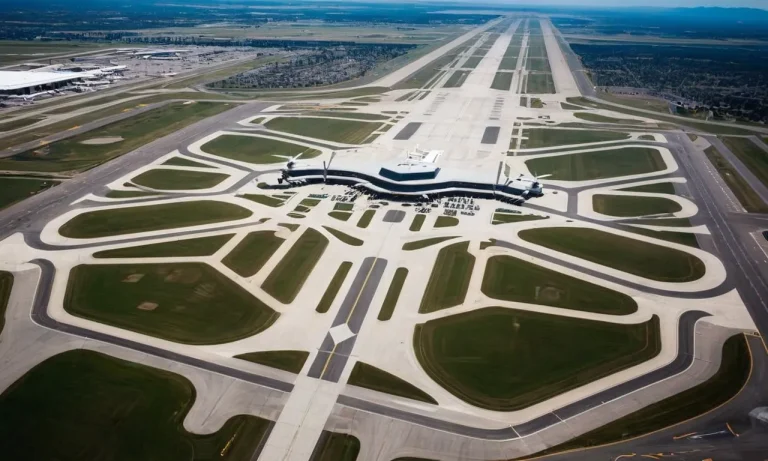Homeowner association (HOA) fees in New York City have risen sharply in recent years, leaving many residents frustrated and searching for answers. If you’re wondering why your HOA fees keep going up, you’re not alone.
In a nutshell, HOA fees in NYC are high due to the unique challenges of maintaining amenities and providing services in a dense, expensive urban environment. Keep reading to learn the key factors driving up HOA fees in the Big Apple.
This comprehensive guide will examine the major contributors to NYC’s steep HOA fees.
We’ll look at the role of amenities, staffing, insurance, repairs and maintenance, reserve funds, location, and market forces in pushing HOA costs ever higher for New York condo and co-op owners.
The Role of Amenities
When it comes to understanding why HOA fees in New York City can be so high, one key factor to consider is the role of amenities.
Luxury buildings and the amenities they offer can significantly drive up the costs for residents.
Luxury Buildings Drive Up Costs
New York City is known for its luxurious residential buildings that offer an array of amenities to its residents. These amenities can include concierge services, fitness centers, rooftop gardens, swimming pools, and more.
While these amenities provide a high level of convenience and luxury, they also come with a hefty price tag.
Developers invest heavily in creating and maintaining these amenities to attract buyers and renters. The cost of building and maintaining these amenities is then passed on to the residents through HOA fees.
The more luxurious the amenities, the higher the fees are likely to be.
Amenities Arms Race
In the competitive real estate market of New York City, developers are constantly raising the bar when it comes to amenities.
Each new luxury building tries to outdo the others by offering even more extravagant amenities, which further drives up the costs for residents.
This “amenities arms race” creates a cycle where developers keep adding more and more amenities to attract buyers, but it also increases the expenses for residents.
While these amenities may be impressive, they come at a cost that is reflected in the HOA fees.
Costs of Pool and Gym Maintenance
One specific aspect of amenities that contributes to high HOA fees in NYC is the maintenance of pools and gyms. Pools, in particular, require regular cleaning, chemical treatments, and repairs to ensure they are safe and functional.
Gym equipment also needs regular maintenance and updates to provide residents with a top-notch fitness experience.
The costs associated with maintaining these amenities can quickly add up. From hiring staff to perform maintenance tasks to purchasing supplies and equipment, these expenses have to be covered by HOA fees.
Additionally, insurance costs for amenities like pools and gyms can also be high, further increasing the overall fees.
Staffing Expenses
One of the factors contributing to high HOA fees in NYC is the staffing expenses. The presence of staff members in residential buildings adds to the overall cost of managing the property and providing quality services to residents.
Here are some of the staffing positions commonly found in NYC buildings:
Doormen
Doormen are an iconic part of New York City living, providing security and assistance to residents. They greet guests, accept packages, and monitor the building’s entrance.
Their presence ensures a safe and welcoming environment, but it also comes at a cost. Doormen usually work in shifts, which means there is a need for multiple staff members to cover the building 24/7.
Concierges
Concierges are responsible for providing a range of services to residents, such as making restaurant reservations, arranging transportation, and handling various inquiries.
They offer a personalized touch to the building and enhance the overall living experience.
However, the employment of concierges adds to the staffing expenses, as they typically work full-time and are available round the clock.
Porters
Porters play a crucial role in maintaining the cleanliness and functionality of the building. They handle tasks such as garbage disposal, cleaning common areas, and performing minor repairs.
The presence of porters ensures that the building is well-maintained, but their salaries and benefits contribute to the overall HOA fees.
Security
Security is a top priority in NYC, and many residential buildings have dedicated security staff. These personnel monitor the premises, control access, and ensure the safety of residents.
The employment of security staff adds an extra layer of protection, but it also increases the HOA fees due to their salaries and training expenses.
Administrative Staff
Administrative staff members are responsible for managing day-to-day operations, including handling paperwork, coordinating repairs, and addressing residents’ concerns.
Their presence ensures that the building runs smoothly and efficiently.
However, the cost of employing administrative staff members adds to the overall expenses and subsequently increases the HOA fees.
Insurance Costs
One of the factors contributing to the high HOA fees in NYC is the cost of insurance.
Condominiums and cooperative buildings in the city are required to have various types of insurance coverage to protect against potential risks and liabilities.
Property Insurance
Property insurance is essential for covering the physical structure of the building, including common areas such as lobbies, hallways, and elevators.
The cost of property insurance can be influenced by factors such as the age and condition of the building, its location, and the replacement value of the property.
In a city like New York, where property values are high, the cost of property insurance can be substantial.
Liability Insurance
Liability insurance is crucial for protecting the HOA against potential lawsuits or claims resulting from accidents or injuries that occur on the property.
This type of insurance covers legal defense costs and any damages awarded to the injured party.
The cost of liability insurance can vary depending on factors such as the size of the building, the number of residents, and the history of claims within the building.
Director and Officer Insurance
Director and officer insurance, also known as D&O insurance, is designed to protect the board members and officers of the HOA from personal liability in case of lawsuits related to their decisions or actions.
This insurance coverage is necessary to attract qualified individuals to serve on the board and make important decisions for the community.
The cost of D&O insurance can be influenced by factors such as the size of the HOA, the number of board members, and the level of risk associated with the community.
It is important for HOAs in NYC to have adequate insurance coverage to protect the interests of the community and its residents.
While insurance costs contribute to the overall expenses of the HOA, they are necessary to ensure the financial stability and protection of the building and its occupants.

Repairs and Maintenance
One of the main reasons why HOA fees in NYC are so high is due to the extensive repairs and maintenance required to keep the buildings in good condition.
NYC is known for its iconic high-rise buildings, which often require specialized and costly upkeep.
Elevator and HVAC Upkeep
Elevators are a crucial part of high-rise buildings, and their maintenance is a significant expense for HOAs.
Regular inspections, repairs, and upgrades are necessary to ensure the safety and smooth operation of these systems.
Additionally, HVAC systems in NYC buildings need to be regularly serviced to provide residents with comfortable living conditions.
Plumbing and Electrical
The plumbing and electrical systems in older NYC buildings often require frequent maintenance and repairs. Aging pipes and wiring can lead to leaks, power outages, and other issues.
To prevent these problems, HOAs must invest in regular inspections, repairs, and sometimes even complete system replacements.
Exterior Facade Maintenance
The exterior facades of buildings in NYC are exposed to harsh weather conditions and pollution. Regular maintenance, including cleaning, painting, and repair of any damages, is necessary to keep the buildings looking their best.
This kind of work often requires specialized equipment and expertise, which adds to the overall cost.
Pest Control
With the dense population and urban environment of NYC, pest control is a constant battle. HOAs have the responsibility of ensuring that buildings are free from pests such as rats, mice, and insects.
Regular pest control treatments and inspections are necessary to maintain a clean and comfortable living environment.
It’s important to note that the cost of repairs and maintenance can vary depending on the age, size, and location of the building.
Additionally, the level of amenities provided by the HOA, such as a gym or rooftop garden, can also contribute to higher fees.
However, these expenses are necessary to preserve the value and livability of the buildings in NYC.
Reserve Funds
One of the main reasons why HOA fees in NYC can be high is the need for reserve funds. These funds are set aside to cover future capital improvements, emergency repairs, and future planning.
Capital Improvements
HOAs in NYC often have to budget for capital improvements, which are major projects aimed at enhancing the value and functionality of the property.
This can include renovations to common areas, such as lobbies or gyms, or the replacement of outdated infrastructure like elevators or plumbing systems.
These projects require significant financial resources, and the cost is distributed among the HOA members through their monthly fees.
Emergency Repairs
Another factor contributing to high HOA fees in NYC is the need to have funds available for emergency repairs.
These unexpected expenses can arise from unforeseen events such as damage caused by severe weather, plumbing issues, or structural problems.
Having reserve funds allows the HOA to address these emergencies promptly without burdening the members with special assessments or high fee increases.
Future Planning
HOAs in NYC also need to plan for the future and anticipate upcoming expenses. This includes budgeting for long-term projects such as roof replacements, facade repairs, or major system upgrades.
By setting aside funds in advance, HOAs can avoid sudden fee increases or the need for special assessments when these projects become necessary.
Location Factors
When it comes to understanding why HOA fees are so high in New York City (NYC), several location factors come into play. These factors have a significant impact on the overall cost of living and housing expenses in the city.
Let’s explore some of the key location factors that contribute to the high HOA fees in NYC.
Land Prices
One of the primary reasons for high HOA fees in NYC is the exorbitant cost of land. Land prices in the city are among the highest in the world, which directly affects the cost of purchasing and maintaining properties.
The limited availability of land and high demand for housing contribute to the inflated prices.
As a result, HOA fees are often higher to cover the costs associated with land ownership, including property maintenance, landscaping, and security.
Property Taxes
Another contributing factor to the high HOA fees in NYC is the steep property taxes. The city has one of the highest property tax rates in the country.
Property owners are responsible for paying these taxes, which are used to fund various municipal services and infrastructure projects.
HOA fees often include a portion dedicated to covering property taxes, especially in buildings with shared common spaces and amenities.
Local Regulations
Local regulations play a significant role in driving up HOA fees in NYC. The city has stringent building codes and regulations that require regular inspections, maintenance, and repairs to ensure the safety and compliance of buildings.
These regulations often result in additional expenses for HOA-managed properties, such as elevator maintenance, fire safety measures, and compliance with accessibility standards.
Meeting these requirements can be costly, and the expenses are passed on to the residents through higher HOA fees.
Market Forces
One of the main reasons why HOA fees are so high in NYC is due to market forces. The city’s real estate market is incredibly competitive, with limited supply and high demand.
This drives up the prices of properties, including condominiums and cooperative buildings that are governed by homeowners associations (HOAs).
Supply and Demand
The limited supply of housing in NYC, coupled with the high demand from a growing population, puts upward pressure on prices. As a result, HOA fees are often higher in order to cover the costs of maintaining and managing the properties.
These fees are used to pay for common area maintenance, repairs, utilities, and other shared expenses.
Renovation Trends
Another factor contributing to high HOA fees in NYC is the prevalence of renovations and upgrades in older buildings.
Many co-op and condo buildings in the city were constructed several decades ago and may require ongoing maintenance and modernization.
These renovations can be costly, and the expenses are typically passed on to the residents through higher HOA fees.
For example, if a building needs a new roof, elevator upgrades, or facade repairs, the HOA fees may increase to cover these expenses.
Additionally, buildings in NYC often have amenities such as gyms, swimming pools, and rooftop gardens, which require regular maintenance and contribute to higher HOA fees.
Neighborhood Gentrification
Gentrification is another factor that can drive up HOA fees in certain neighborhoods of NYC. As areas become more desirable and undergo gentrification, property values increase, leading to higher HOA fees.
This is because the cost of maintaining and managing the buildings also increases with rising property values.
Furthermore, gentrification can bring about additional amenities and services in the neighborhood, such as improved public transportation, parks, and retail establishments.
While these enhancements can be positive for residents, they also contribute to higher HOA fees as the costs of maintaining these amenities are passed on to the homeowners.
Conclusion
In summary, New York City’s sky-high HOA fees reflect a perfect storm of amenities, staffing, insurance, maintenance, and market conditions unique to a dense, expensive metro area.
While costs may remain high, understanding the key drivers can help NYC residents make informed housing decisions.
The next time your HOA fee statement arrives with an increase, you’ll have a better grasp of the myriad factors behind the rising costs. Though the fees are frustrating, they help maintain your property and keep New York City running.






